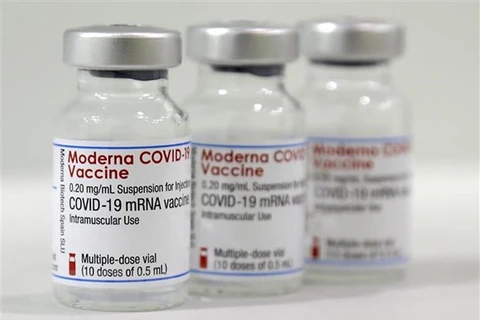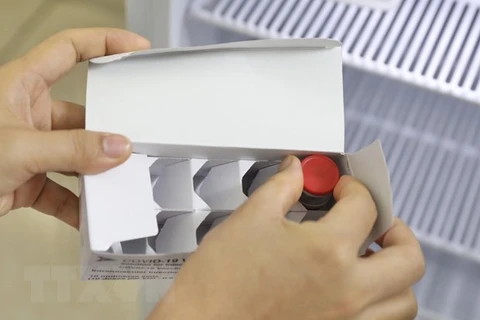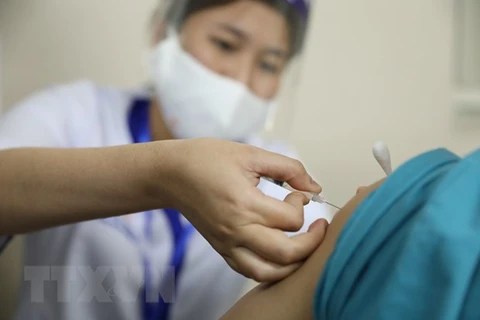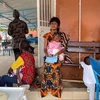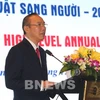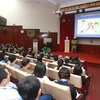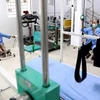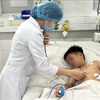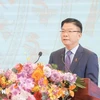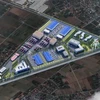 People have their body temperature checked and sanitise their hands when visiting Thang Long Imperial Citadel on March 8 (Photo: VNA)
People have their body temperature checked and sanitise their hands when visiting Thang Long Imperial Citadel on March 8 (Photo: VNA) The testing aims to help the city’s authorities detect COVID-19 cases in the community early, particularly in high-risk areas like restaurants, coach stations, factories or areas where many foreigners reside.
According to the city’s health department, the tests will be conducted first in residential areas in Nam Tu Liem district and An Khanh Industrial Zone in Hoai Duc district on March 11 and March 12.
People in other districts will be tested from March 15 to March 19.
Under the plan, 1,500 wokers in four industrial zones – Bac Thang Long, Phu Nghia, An Khanh and Quang Minh will be tested for SARS-CoV-2.
An additional 1,600 people who live or work in nine buildings will be tested, including the Golden West Lake Apartment building in Tay Ho district, Imperia Garden in Thanh Xuan district, Splendora Urban Area in Hoai Duc district, PVI Building in Cau Giay district, Cornerstone Building in Hoan Kiem district, Golden Palace Keangnam, My Dinh New Urban Area and Vinhomes Sky Lake in Nam Tu Liem district.
At each of the five coach stations in the city, 100 workers will be randomly tested for SARS-CoV-2.
Restaurants in the My Dinh-Song Da Urban Areas in My Dinh 1 ward, Nam Tu Liem district and those serving many foreigners in Tay Ho, Hoan Kiem and Cau Giay districts will also have their staff tested./.
VNA
